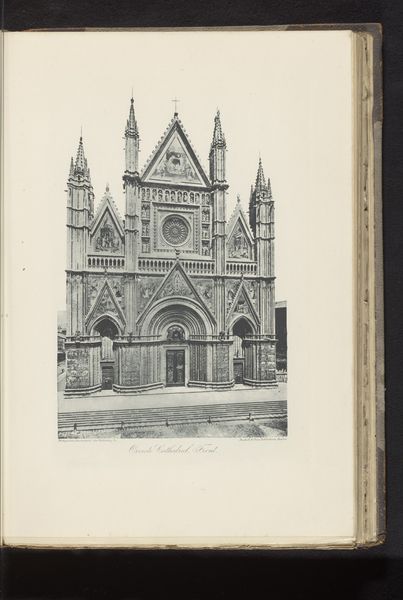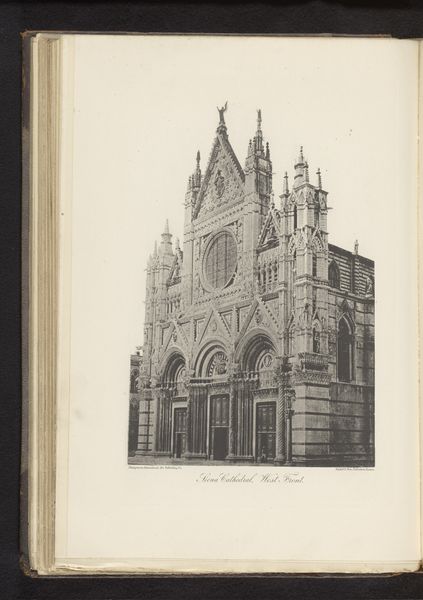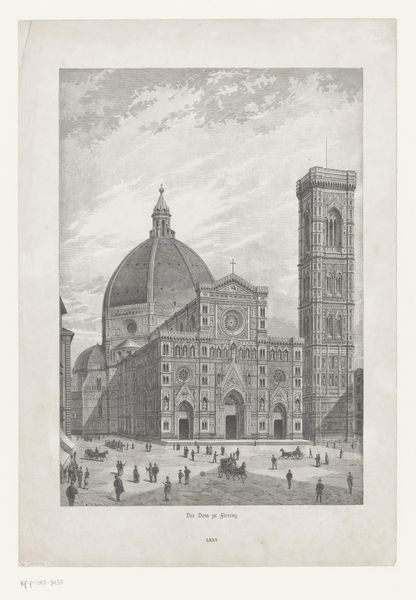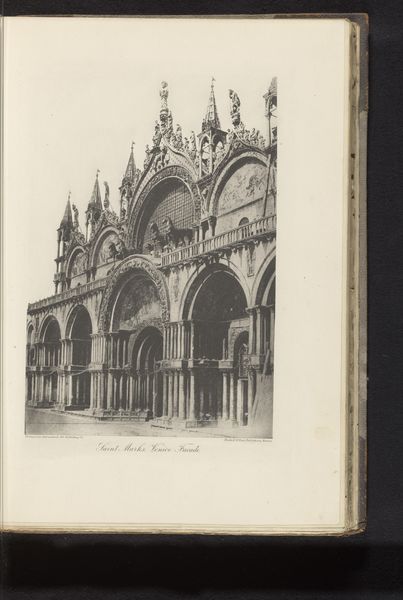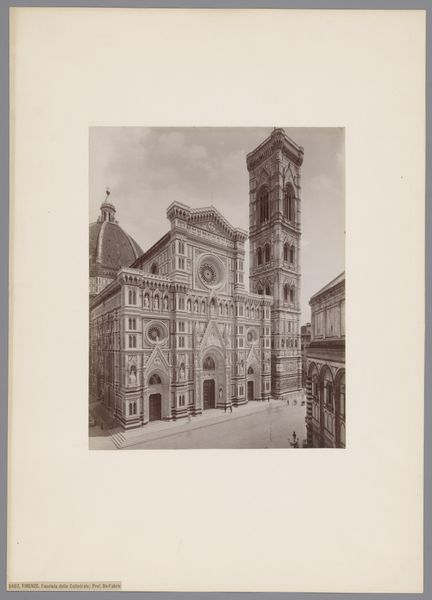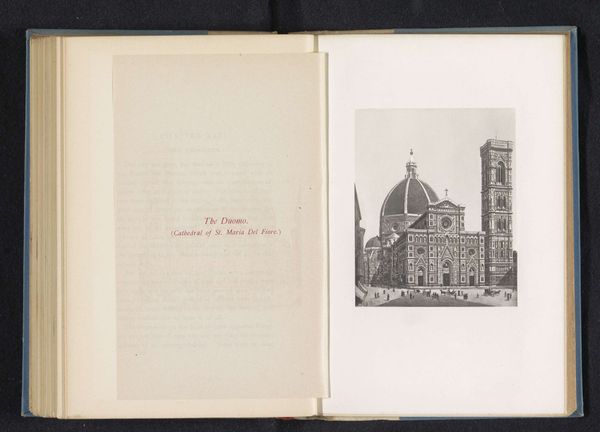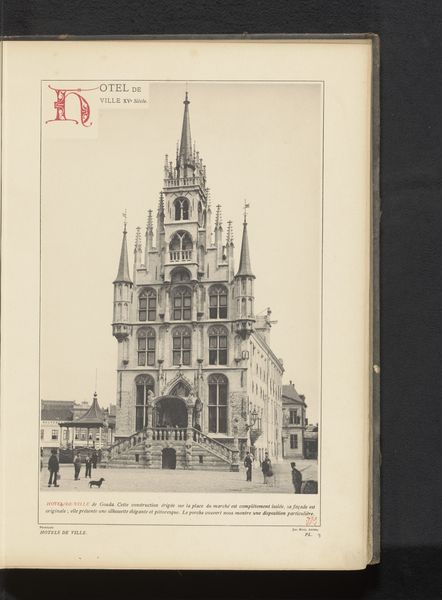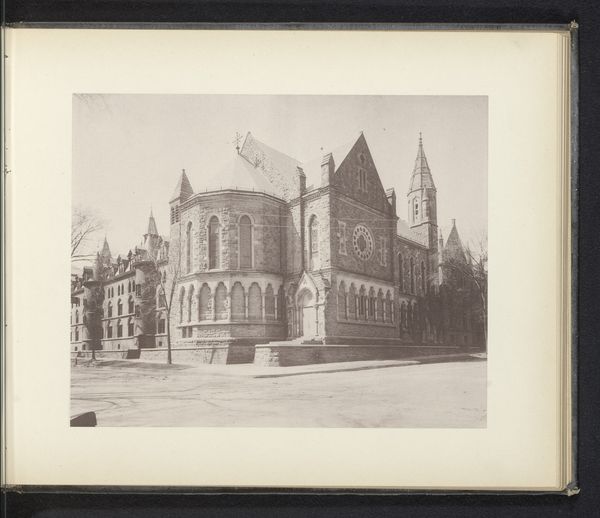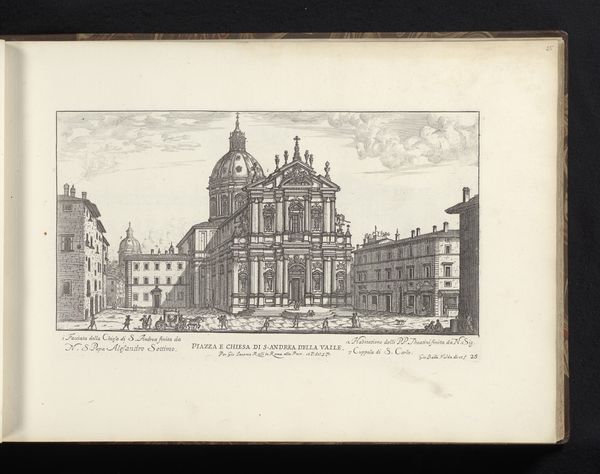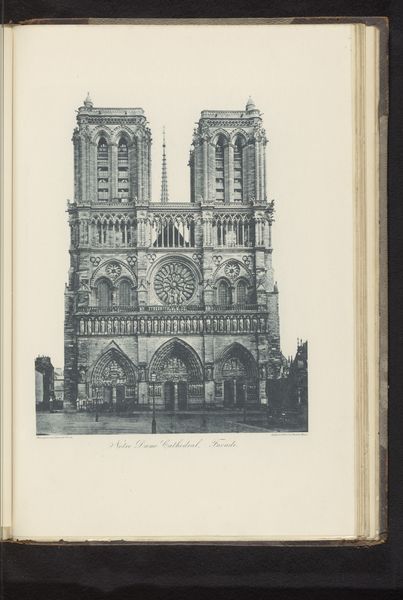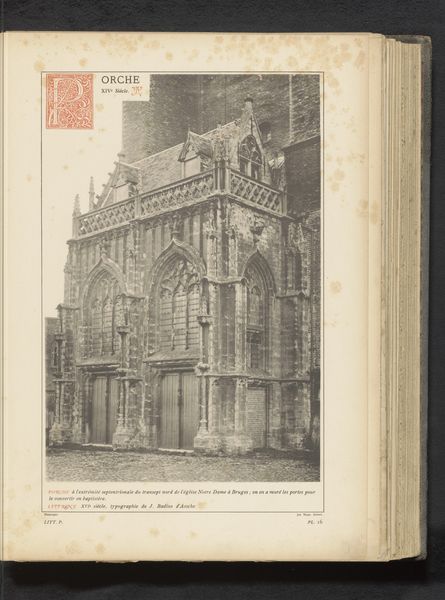
drawing, print, paper, ink, engraving, architecture
#
drawing
# print
#
paper
#
ink
#
geometric
#
pen and pencil
#
cityscape
#
italian-renaissance
#
engraving
#
architecture
Dimensions: height 290 mm, width 203 mm
Copyright: Rijks Museum: Open Domain
Editor: Here we have an engraving of the Florence Cathedral, also known as the Duomo, made before 1886. It's a rather formal, precise depiction. How do you interpret this work in terms of its historical and social context? Curator: It’s fascinating to consider this image not merely as a representation of architectural grandeur but as a document of power. Consider who commissioned this engraving, who consumed it, and what ideological work it performed. Was it for tourists? An assertion of Florentine pride? Or a reminder of the Catholic Church's authority? What does its circulation reveal about class and access to information at the time? Editor: That's a different perspective than I had considered. I just saw a pretty picture. Do you think the choice of engraving as a medium contributes to its meaning? Curator: Absolutely. Engraving, with its inherent reproducibility, allowed for the wide dissemination of this image. Think about how that mass distribution reinforces dominant narratives. Whose perspectives are prioritized, and whose are excluded by the limitations of the artist, printer, and distribution? Does the precision of the lines reflect or uphold certain societal values relating to science or documentation? Editor: So you’re saying we need to look beyond the cathedral itself and consider the systems of power that this image supported? Curator: Exactly. This isn't just about aesthetics; it's about critically examining how art functions within a network of social, political, and economic forces. Editor: That's a powerful way to look at even seemingly straightforward images. I'll definitely think more about the context next time. Curator: And hopefully consider the hands and lives behind the artwork as well.
Comments
No comments
Be the first to comment and join the conversation on the ultimate creative platform.

